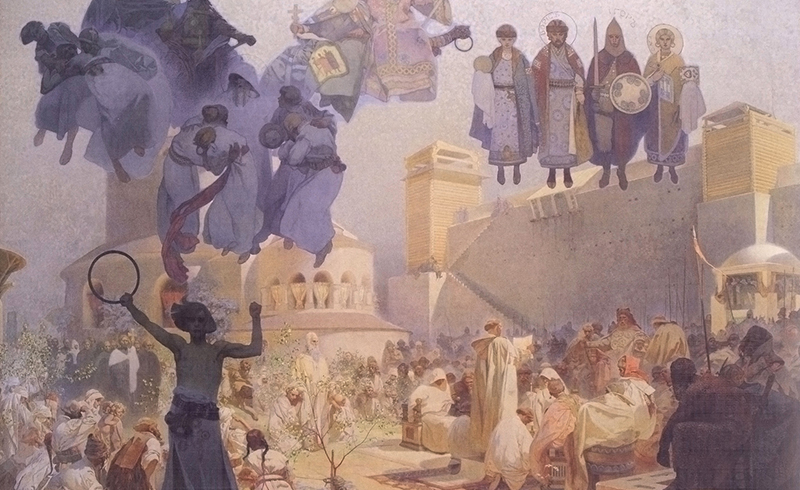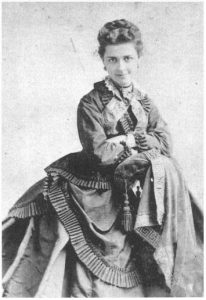
September 6, 2017
Dvořák’s Te Deum
In 1891, Mrs. Jeannette Thurber, an energetic American philanthropist and music lover, had a great triumph: she convinced the world-renowned Czech composer Antonin Dvořák to be the new director of her National Conservatory of Music in New York City. For his arrival the following year, she commissioned him to write a piece for the 400th anniversary of Columbus Day: a grand cantata for chorus, orchestra and soloists. She would provide a text, but in case it did not arrive on time, “the proposition is that Dr. Dvořák choose some Latin Hymn such as ‘Te Deum laudamus’ or ‘Jubilate Deo’ or any other which would be suitable for the occasion.”

Ultimately she settled on a poem called The American Flag, but by the time Dvořák received it he had already written his Te Deum. The Te Deum (We Praise Thee, O God) is a traditional Latin hymn that had been set to music by many composers over the centuries. By 1891, Dvořák had already written several major sacred works, including his Requiem and Stabat Mater.
Faith was important to Dvořák, a devout Catholic, but at the same time he was also quite tolerant of others’ beliefs; he wrote his violin concerto for the great Jewish violinist Joseph Joachim, and was a longtime friend of the composer Johannes Brahms, a Lutheran-turned-agnostic. Of Brahms’ lack of faith he once famously wrote, “Such a man, such a fine soul—and he believes in nothing! He believes in nothing!”
Perhaps more important for understanding the Te Deum is a story from Dvořák’s youth. Once during family prayers he memorably exclaimed, “I pray best over there at the window, looking out at the greenery and the sky!” Dvořák’s faith was colored by his love of nature, and the music he wrote for his Te Deum has an earthiness not usually found in the ethereal world of sacred music.
In the opening chorus, pounding timpani, cymbals, triangle and bass drum make a tremendous noise:
Trilling woodwinds evoke twittering birds as the violins joyfully play melodies and rhythms inspired by Czech folk music. The harmonies are extremely simple, as one would expect from a band of improvising peasant musicians: the first 20 measures, about a minute of music, are essentially one long G major chord. The music conjures images of a great outdoor festival with just a whiff of the Slavic, pre-Christian past.

The other major influence on the Te Deum is operatic. Like Verdi’s Requiem of 1874, the music has a theatricality and drama more common in the opera house than the choir stalls. It also calls for two outstanding operatic soloists, a soprano and bass (the same solo voice types Brahms used in his German Requiem). The soloists also help clarify the structure of the twenty-minute work, making its sections easy to follow.
After the opening chorus, the music slows for an expressive solo passage in which the soprano sings of the apostles, prophets and martyrs all praising the divine. Woodwinds echo motifs from the opening, and in hushed tones the chorus sings “Holy Lord God of hosts” as a refrain.
The jubilant opening music then returns, leading to a solo for the bass. Announced by a brass fanfare, the bass sternly proclaims, “Thou art the King of Glory,” continuing praise for God the father and son. Accompanied by sweet violins, the chorus responds by singing “We therefore pray thee, help thy servants.”
In the following chorus, the music becomes more dramatic as the chorus sings with new urgency. The soprano then begins a confessional, operatic solo, pleading “O Lord, in thee have I trusted: let me never be confounded.” The chorus comments with “O Lord, have mercy upon us,” a phrase that is high and delicate when sung by the women and low and mysterious when sung by the men.
The soprano and bass then join together for a final blessing, beginning a gradual crescendo that leads to one of Dvořák’s most electrifying endings. The sound of the soprano soaring over the interweaving bass, chorus and orchestra during the final Alleluias is truly ecstatic. —Calvin Dotsey
Don’t miss Dvořák’s Te Deum at Mahler & Dvořák, September 14, 16 & 17. Get tickets and more info at houstonsymphony.org.






